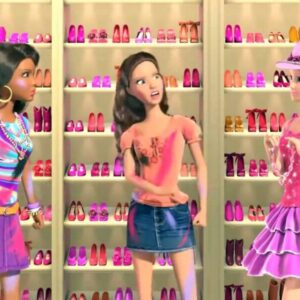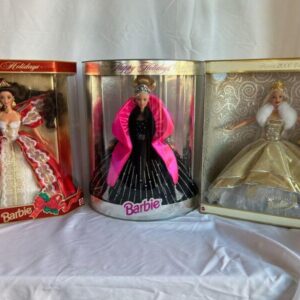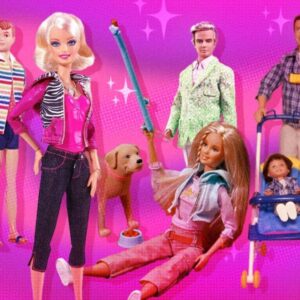Who is the real life barbie? The most famous “real-life Barbie” is Valeria Lukyanova, a Ukrainian model and social media influencer.
She has been known for her extremely doll-like appearance, which she has achieved through a combination of plastic surgery, makeup, and diet.
Lukyanova has denied having any plastic surgery, but many experts believe that she has had multiple procedures, including breast augmentation, rhinoplasty, and lip fillers.
Other women who have been called “real-life Barbies” include:
Angelica Kenova, a Russian model who has had multiple plastic surgeries to resemble a Barbie doll.
Sahar Tabar, an Iranian model who has become known for her heavily edited photos, which make her look like a zombie-like version of Barbie.
Pixee Fox, a Swedish model who has had over 200 plastic surgeries to achieve her doll-like appearance
Lil Miquela, a computer-generated model who has been called the “most famous robot in the world.”
It is important to note that not all women who are called “real-life Barbies” have had plastic surgery. Some women simply have a naturally doll-like appearance. Ultimately, whether or not someone is a “real-life Barbie” is a matter of opinion.
The “real-life Barbie” phenomenon is a reflection of the unrealistic beauty standards that are often portrayed in the media.
These standards can be harmful to young women, who may feel pressure to conform to an impossible ideal.
It is important to remember that beauty comes in all shapes and sizes, and that there is no one “right” way to look.
Who is the real life barbie?
The buzz behind Greta Gerwig’s “Barbie” movie is undeniable – but this is hardly the first time the country has been swept by Barbiemania.
Around 300,000 Barbie dolls were sold in 1959, her first year on the market, per Mattel. Carol Spencer, a doll designer for Barbie from 1963 to 1998, explains the craze.
“The children, when they saw the doll in the stores, went wild for her,” Spencer says. “And it continued for years and years and years.”
Essentially, even if you didn’t play with one as a kid, you knew someone who did.
But what’s behind this Barbiemania, which began long before the movie? What’s the appeal of the doll, just under one foot tall? And how did it all begin?
Read on for the history behind Barbie, and learn how one girl inspired a toy empire.
The inspiration behind the Barbie doll
Like many renowned companies, Mattel began as a startup in a garage. In 1945, husband and wife, Ruth and Elliot Handler, teamed up with Harold “Matt” Matson to collaborate on innovative toys for children.
When it came to naming the company, they decided to combine Matt and Elliot’s name to form “Mattel.”
The company’s first products were picture frames and dollhouse furniture; from there, they transitioned into toys.
The trio’s first successful endeavor was a ukulele-type instrument called the Uke-A-Doodle. After a string of other hit toys, the company soon grew into a global corporation.
A decade later, Ruth Handler was walking along the streets of Switzerland with her 15-year-old daughter, Barbara, when they spotted Bild Lilli, a gag gift doll of sorts, in a store window, according to a 2002 New York Times article with Barbara Handler.
In the interview, Barbara Handler said she became obsessed with the doll, especially since unlike the paper dolls she loved playing with, Lilli was three-dimensional and came with clothes.
But there was just one problem.
“I was going crazy because I wanted different clothes for it, and they didn’t sell the clothes separate. You had to buy a different doll every time you wanted a different outfit,” Handler told the NYT.
“My mother thought, Why is this daughter of mine so crazed about this doll? She bought a couple of them. And when we got back, I never saw them again. They were torn apart and researched, and they got the idea of the separate clothes, and the rest is history.”

The Barbie doll debuted in 1959
While Ruth Handler was passionate about creating a new doll aimed at young girls, Mattel’s men — including Handler’s husband, Elliot — didn’t believe that the toy had legs. At least not in terms of profitability, anyway.
“Most of the men did not think, the buyers in the stores, or the people here, or any of the men, did not think Barbie was going to work and they were certainly wrong,” Barbara Handler said in a 2017 interview with the Branded Content Marketing Association (BCMA).
Even so, Ruth Handler persisted in the creation of the doll, which she affectionately named after her daughter.
“I was usually called Barbara, but I had all different little nicknames: Babsy, Bobby and Barbie,” Barbara Handler told the New York Times.
In March of 1959, Barbie Millicent Roberts (yep, Barbie’s got a middle and last name) debuted at the American Toy Fair in New York. Far from being just a simple children’s toy, Ruth Handler believed that Barbie’s potential was much more far-reaching.
“Ruth Handler, whether or not she called herself a feminist, was a feminist from day one,” Tanya Stone, author of “The Good, the Bad, and the Barbie,” tells TODAY.com.
According to Stone, Ruth Handler wanted Barbie to represent choice and possibility for girls, allowing them to imagine themselves as anything they wanted to be.
“She wasn’t coming from the point of view of they should be president, they should be a neurosurgeon,” Stone explains.
“She was coming from the point of view of if they want to be a secretary, they should be a secretary. And if they want to be a business executive, they should be a business executive. If they want to be a flight attendant, that’s what they should be. But they should have the choice to be a pilot.”
Ruth Handler’s gamble paid dividends. According to History.com, more than 300,000 dolls were sold in the first year. And since then, Barbie has gone on to become one of the most popular toys of all time, with sales of the Barbie brand grossing more than $1 billion annually.

Barbie diversifies
After Barbie’s successful launch in 1959, Ruth Handler wasn’t content to stick to just a single concept. A dazzling wardrobe of clothes, shoes and accessories soon followed, along with new digs in the form of a snazzy Barbie Dreamhouse.
Then there was Ken. In 1962, three years after Barbie hit the market, Mattel decided to give her a boyfriend.
Keeping it in the family, the doll was named after the Handler’s son – Ken.
“I’m sure it was awkward for him, too. Just having a doll named after you, people make a big deal. It was a bit different,” Barbara Handler told the New York Times.
As for Ken Handler, who died in 1994, he told the LA Times in 1989 that he was nothing like his namesake, preferring “movies with subtitles” and books to Ken’s Malibu lifestyle.
“He goes to the beach and surfs. He is all these perfect American things,” Ken Handler said in the interview.
A few years after Ken, Barbie once again broke new ground when Mattel decided to shoot for the stars. Literally.
“The Astronaut Barbie, from 1965, was (introduced) 18 years before Sally Ride,” Stone says of the landmark release. “Eighteen years before NASA allowed women into the space program.”
In 1968, Mattel introduced “Christie,” the first Black Barbie, followed by a line of Barbies encompassing an array of nationalities and occupations, including CEO Barbie in 1985.
“Mattel made a lot of forward movement moves. They were pretty progressive. And, just as human beings, Ruth and Elliot Handler know what it’s like to experience anti-semitism and they created an equitable, diverse workplace in the ’50s,” Stone explains.
And Barbie was reflected in that ethos.
“At the heart of Barbie is Ruth’s concept of ‘you can be anything,'” she says. “The heart of her intention was empowerment.”
Reflecting on her mother in the BCMA interview, Barbara Handler said, “She was a pioneer of her time, for sure. She was always for the women to be successful and strong. And she was a strong person.”
Now, more than 64 years after Barbie first transformed pop culture, the 11-inch doll shows no signs of fading into obscurity. If anything, with a buzzworthy big-screen movie to add to her countless credits, she’s more popular than ever.
“It’s a fascinating thing, the longevity and the timelessness of the popularity of this doll,” says Stone. “I think there’s always going to be another Barbie wave.”
Above is information about who is the real life barbie that we have compiled. Hopefully, through the above content, you have a more detailed understanding of Barbie. Thank you for reading our posst.








